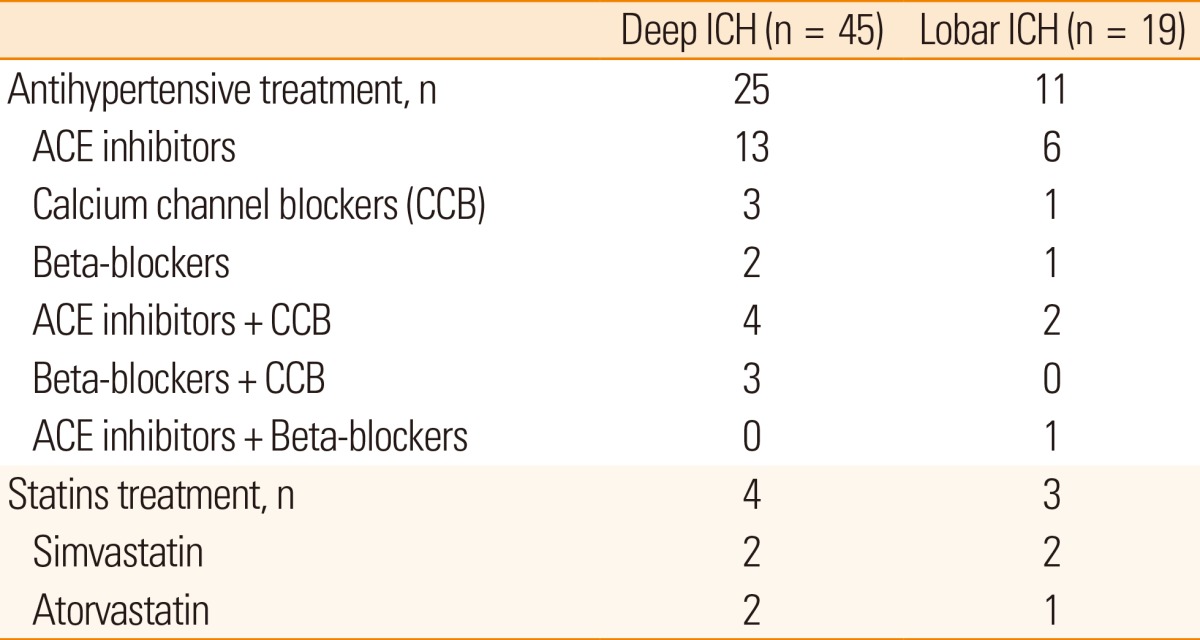Response: Aortic Stiffness in Patients with Deep and Lobar Intracerebral Hemorrhage: Role of Antihypertensive Drugs and Statins
Article information
Dear Sir:
Varol and Ozaydin1 raise an important question about the effects of antihypertensive drugs and statins on arterial stiffness. In fact, antihypertensive drugs reduce large arterial stiffness, partly independently of blood pressure reduction, suggesting specific pharmacological effects on arterial remodeling.2 Furthermore, statins and other cholesterol-reducing agents have been shown to have beneficial effects on wave reflection and aortic stiffness reduction in several patient groups.3 In our study,4 25 out of 39 hypertensive patients with deep intracerebral hemorrhage (ICH) and 11 out of 15 hypertensive patients with lobar ICH received antihypertensive drugs, whereas 4 patients with deep ICH and 3 with lobar ICH received statins (Table 1). Fisher test showed no significant differences between the two groups with regard to patients treated with antihypertensive drugs (P=1, not significant) and with statins (P=0.41, not significant), confirming our hypothesis that arterial stiffness may play a key role in the pathophysiology of deep ICH in comparison with lobar ICH, regardless of the therapy employed. Due to the small sample size of patients, the heterogeneity of the drugs administered, and the different lengths of treatments, our study design does not allow any conclusion to be drawn about the effects of these drugs on arterial stiffness. A larger number of patients are necessary to evaluate the efficacy of these promising therapeutic strategies in reducing arterial stiffness and eventually preventing deep ICH.
Notes
The authors have no declaration of interest.
